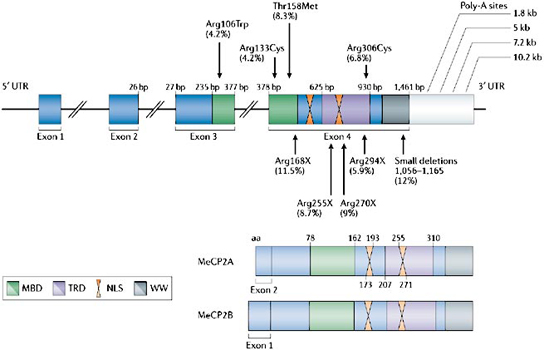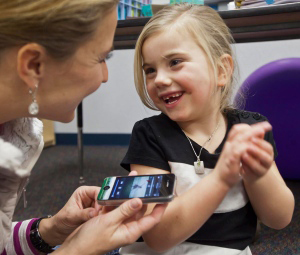
Molecular genetics of Rett syndrome: when DNA methylation goes unrecognized.
Rett syndrome, a severe autism spectrum disorder, which affects roughly 1 girl in 10,000 to 20,000 worldwide, could be reversed by a bone-marrow transplant.
The findings were published in the journal Nature, and suggest that the brain-dwelling immune cells, called microglia, are defective in sufferers of Rett syndrome. Bone-marrow transplants or other means of boosting the brain’s immune cells could help treat the disease.
This could lead to feasible therapies in the future, states Jonathan Kipnis, neuroscientist at the Virginia School of Medicine in Charlottesville, who led the study.
 The disease is caused by mutations in a single gene on the X chromosome, MECP2. Males born with the mutation die within weeks of birth. Females with one faulty copy develop Rett syndrome.
The disease is caused by mutations in a single gene on the X chromosome, MECP2. Males born with the mutation die within weeks of birth. Females with one faulty copy develop Rett syndrome.
Sufferers of Rett syndrome are typically between 6 and 18 months of age. They have trouble putting on weight, often do not learn how to speak and they can repeat behaviors but have trouble walking. Rett syndrome is classified as an autism spectrum disorder and current treatments focus on symptoms such as nutritional and gastrointestinal problems.
Scientists suspect that other brain cells are involved. Reactivating MECP2 in brain-support cells called astrocytes treats gait problems and anxiety in mice.
Kipnis and his team focused on microglia, the brain’s macrophages. The mice in the study had their immune cells destroyed using radiation. Then they were injected with bone-marrow cells with working copies of MECP2.
All of the symptoms were alleviated with the bone-marrow transplant in both male and female mice. Kipnis suspects that microglia in Rett mice had trouble clearing up cellular detritus in the brain, making it more difficult for neurons to work properly.
Reference: “Wild-type microglia arrest pathology in a mouse model of Rett syndrome” by Noël C. Derecki, James C. Cronk, Zhenjie Lu, Eric Xu, Stephen B. G. Abbott, Patrice G. Guyenet and Jonathan Kipnis, 18 March 2012, Nature.
DOI: 10.1038/nature10907









Be the first to comment on "Rett Syndrome Could be Reversed by Bone-marrow Transplant"